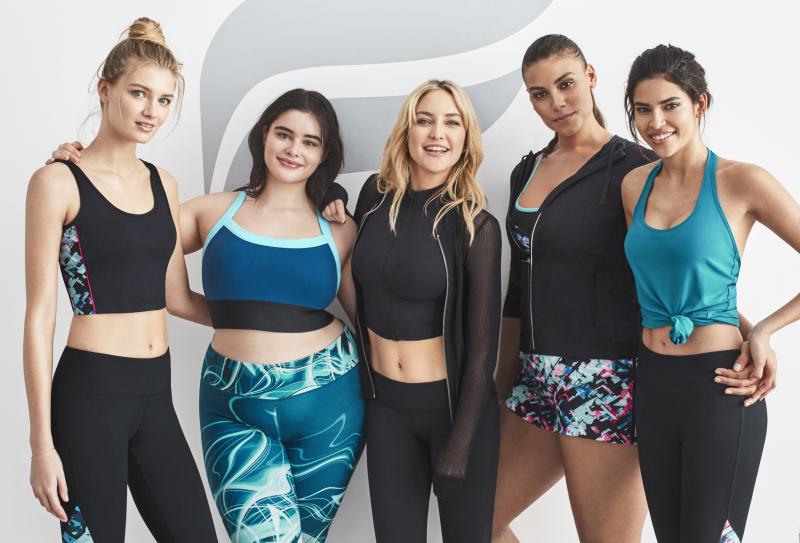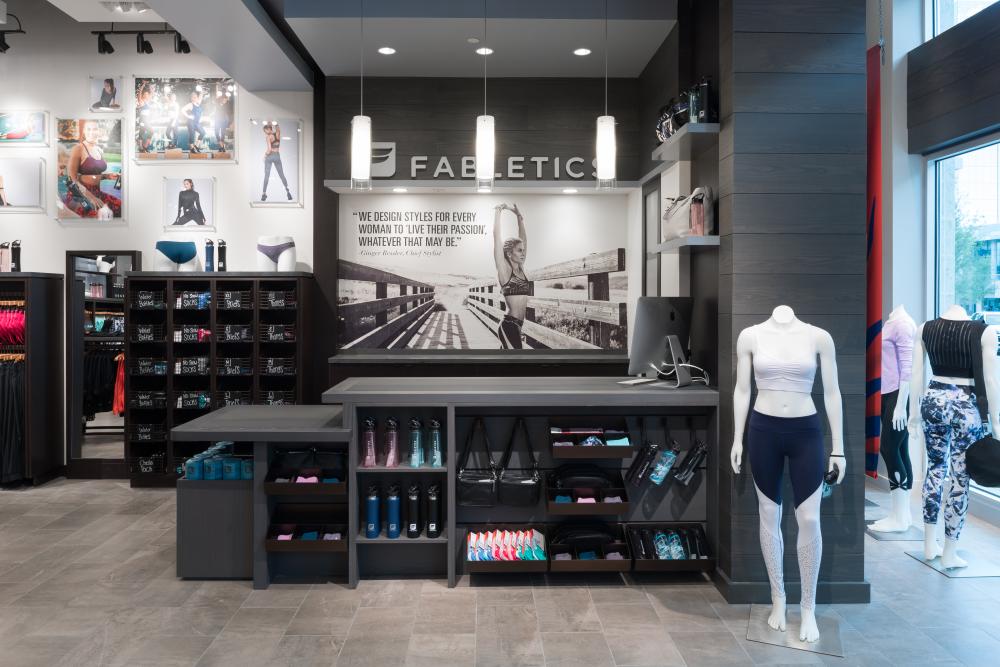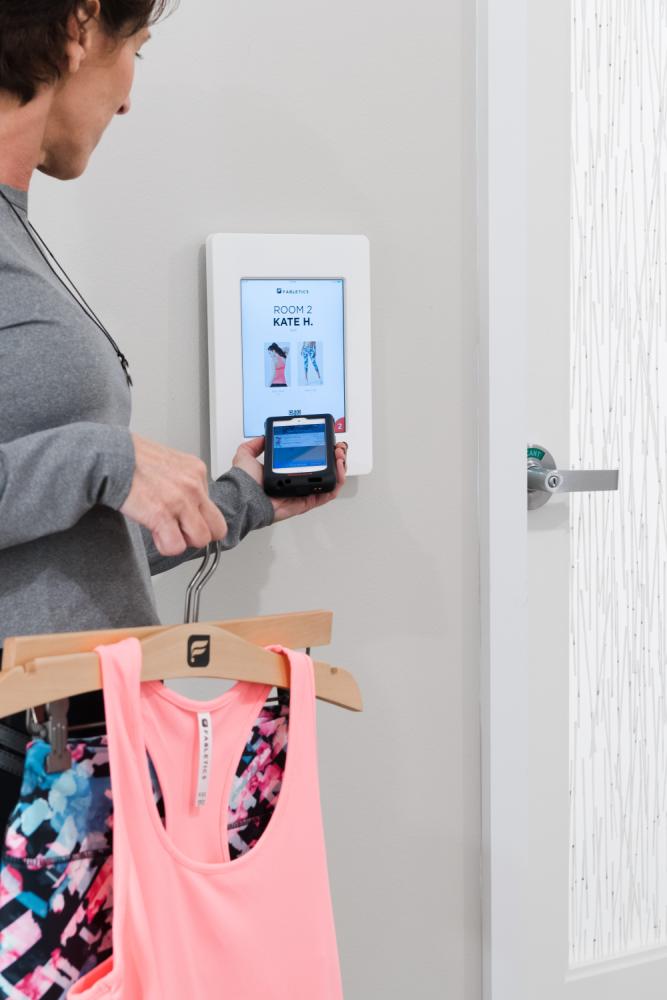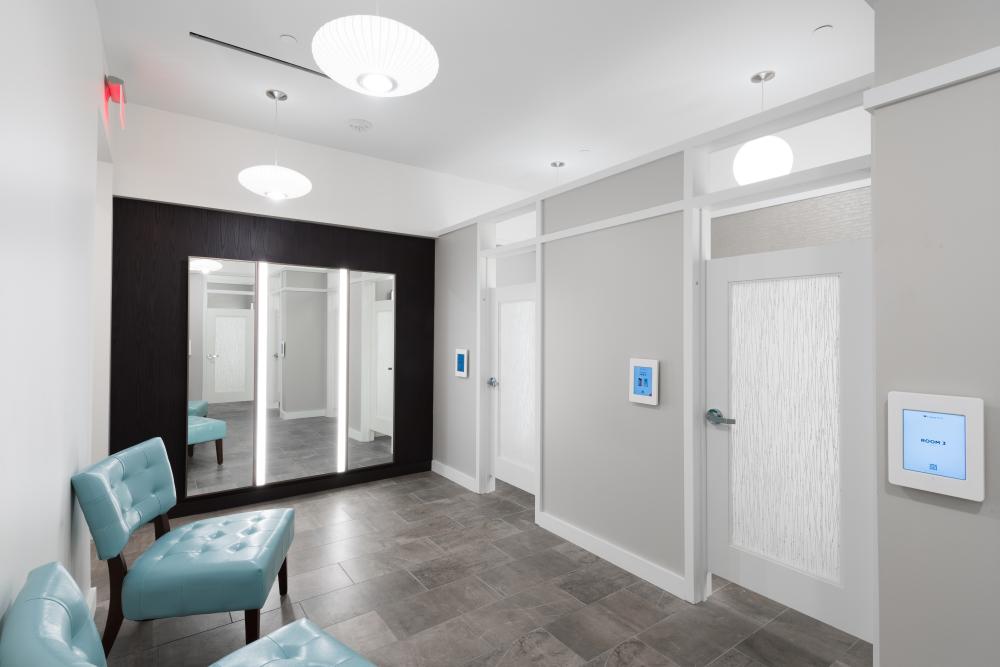TechStyle CEO: Brands Should Be Built Online + E-Comm Leaders Will Be on Their Own Platforms
Apparel caught up with Adam Goldenberg — CEO of billion-dollar web-first startup TechStyle Fashion Group — at Shop.org last week in Los Angeles where he was among the keynote speakers. TechStyle operates the JustFab, Fabletics, ShoeDazzle and FabKids brands.
Goldenberg, who “fundamentally” believes that brands should be built online, says web-based fashion sales will grow to 30 percent in four years, up from 18 percent penetration now. And at TechStyle Group, those numbers could be more like 50/50 in as little as seven years. Why? It’s simply what shoppers want, he says. The old concerns about touching and feeling a garment prior to purchase are a thing of the past. No one, he points out, is saying she’s shopping less online now than she was a year ago.
Online’s biggest advantage? The faster feedback loop. TechStyle Group achieved five years of maturity in just six months’ time, quickly tweaking price points and fine-tuning the brand based on customer response. Plus, e-commerce platforms can re-merchandise storefronts to personalize the shopper’s experience; physical stores are all set up the same way no matter who walks in the front door.
As apparel retail evolves, Goldenberg says metrics such as store openings and comp store sales will become obsolete, replaced by the new barometers of health and success: customer acquisitions costs and lifetime value: brands should see a customer’s value rise over time like a store comp would, he explains.
With Fabletics achieving slightly more national brand recognition (50 percent) than lululemon just two years after launch, Goldenberg says opening stores was the next step, and key to increasing existing customers’ lifetime value. She now spends 3x more annually when shopping multiple channels.
And FashionOS, TechStyle’s proprietary platform, offers a detailed look at customer behavior across channels with a focus on the store. Patent-pending Omnicart follows product that goes into dressing room, tracks conversion at the customer, item and size levels, and enables the retailer to retarget customers digitally with the items they tried on in store. That sort of rich data yields truly actionable insights. For example, armed with information that the size XXS Salar capri pant was converting at just 19 percent — lower than the average 25 percent across the other sizes — the company discovered and resolved a grading issue with the pant’s calf area.
With 22 stores today and “many more” planned for 2018, the TechStyle Group chief says that stores comped at 38 percent last quarter. Like every other player in apparel retail, traffic is flat, Goldenberg notes, but the brand’s stores are effective in increasing her basket size.
See what else Goldenberg had to say on customer care, winning with technology, optimizing mobile and serving plus-size shoppers.
Apparel: How have you resolved the rash of customer complaints from the early days of JustFab?
Goldenberg: We’ve enhanced how we explain things and educate our customers. I just got back from nine days in Phillipines, listening to how our customer service agents handle calls and customers. Also, consumers themselves are becoming more familiar with the concept of membership programs. Seven years ago, membership models virtually didn’t exist. Today we have one of the highest NPS scores and a very low rate of complaints out of 4.6 million VIP subscribers. Even one complaint is too much, but the ratio of complaints is very, very low.
Apparel: What’s your approach to technology?
Goldenberg: We’ve had our own tech stack from day one because we spun JustFab out of an incubator called Intelligent Beauty, so we had that initial tech platform. Many years earlier we’d decided that [proprietary technology] was the way to go and our FashionOS is a $100-million investment. We didn’t have POS until we decided to expand into brick-and-mortar retail. We hired a team out of a traditional retail background and told them we want to build our own POS and they said, “that’s crazy, there’s a million POS systems, it can’t be done, we’ve spent two years just implementing POS.”
We said: just give us six months and if we can’t build a proof of concept that you’re excited about then we’ll go off the shelf. And it worked. Vertical integration is a core competency. Don’t outsource technology. The leaders in e-commerce will be on their own platforms.
There’s been so much advancement in technology that you can move pretty quickly. There’s a lot of hidden costs in using third-party technology that people don’t mention. When you're using 10-15 tech tools, you still need developers to integrate them all together. The question is: do you want to spend money on integrating technology or invest your dollars developing new features? Of course, there are “commoditized” things we use that are third party: Google Analytics, email platform, etc.
Apparel: How does your company think about mobile?
Goldenberg: More than 80 percent of new leads to the brand come through mobile and 50 percent of sales are on mobile. There’s a lot of multichannel activity. She’ll pick out product on mobile, flag as a favorite or put it on her cart, but then convert on desktop. Mobile has actually helped us because now people are more connected to their email so we can educate and reach customers.
One of our biggest challenges is getting e-commerce employees from behind their desks to go out and meet our customers. We do a lot of Meet the VIP events in the L.A. office and also fly different employees to cities where we have high customer penetration. The thing we heard the most last year that we’re working on this year is increasing the amount of user-generated content (UGC). Especially in fashion, women want to know what the garment looks like on real people and on someone like her.
We’ve replaced a decent amount of our photo shoots with UGC, and product with UGC and product reviews typically converts better than items without.
We’ve enhanced the focus on our mobile site functionality because longtime customers were saying “I still like shopping on desktop because XYZ was too hard or took too long.”
There was a bug that when a mobile user hit “back” on a slower connection, it took them back to the very first page, which is so frustrating. So we heard a little about that, but then we took our vice president of product to a customer event and met three customers with that complaint, and he’s like, “I have to go handle this now!”
It’s funny, it sat on the bug list for a while but he fixed it in 24 hours after hearing about it directly from customers.
Apparel: There’s been a lot of activity happening in the plus-size world. How do you address the market?
Goldenberg: We think the idea of having a separate plus-size store is so antiquated. Maybe it made sense in a physical retail store where you’re space constrained but in a virtual world there’s no reason not to integrate sizes. Because we started with footwear, a lot of our customers were already a plus-size consumer. We wanted to launch with plus apparel from day one. But it’s hard: you need to have different technical designers, more or less twice the size of the design and technical team. So we wanted to first make sure we got apparel right and then expand. But we did it because that’s what our customers want and we want to be a brand that’s inclusive for everybody. We recently added extended sizing for Fabletics, for example. Every new brand going forward, including a new line planned for 2018, is launching with plus on day one.








